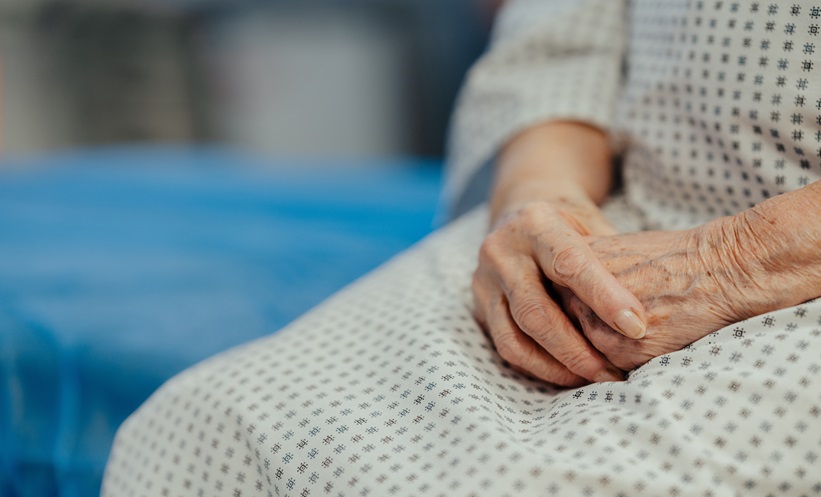The following highlights spotlight selected abstracts presented at the American Academy of Neurology (AAN) 2024 Annual Meeting. Covering a range of topics, from cognitive decline impacting speech behavior to assisted reproductive technologies in multiple sclerosis, read on for this year’s most innovative new research in neurology.
Citation: Neurol AMJ. 2024;1[1]:34-44. https://doi.org/10.33590/neurolamj/CMMH8341.
![]()
How Does Age-Related Cognitive Decline Affect Speech Behavior?
AGE-related cognitive decline leads to greater entropic descriptiveness in connected speech tasks, according to new research presented at the AAN Annual Meeting 2024, held from April 13–18 in Denver, Colorado, USA.
A complex array of cognitive processes is required for speech production; age-related decline slows down these processes, leading to language changes. To address previously conflicting data on the patterns of connected speech in aging individuals, Michael J. Kleiman, University of Miami Miller School of Medicine, Florida, USA, and team, enrolled 53 healthy participants (age range: 55–85 years; mean: 70.3±8.1 years) to measure the continuous trajectory of decline, and examine language changes due to aging.
Participants were administered three connected speech tasks: picture descriptions, narrative recall, and open-ended responses. Transcribed speech was analyzed to produce measures of lexical complexity, lexical diversity, lexical frequency, parts of speech ratios, entropy, disfluencies, and speech rate. Each measure was examined continuously using linear regressions and correlations.
Across all tasks, the team observed increases in entropy and filled disfluency rate, and decreases in closed-to-open class word ratios. They also found increases in adjective-to-verb ratio differences found in picture description tasks. Post-disfluency latencies and open-class word use also increased continuously.
Overall, the study found that increasing age was associated with a tendency towards less complex language, with a decline in conciseness, a tendency to over-describe, and an increase in processing time when searching for these descriptions.
Suicidal Ideation in Patients with Spinocerebellar Ataxias
PATIENTS with spinocerebellar ataxias (SCA) have been shown to be at an increased risk of suicidal ideation, according to new research presented at the AAN Annual Meeting 2024. Though suicidality has been linked to a variety of neurological disorders in previous research, it has not been extensively studied in individuals with SCAs.
Levi Peppel, Baylor College of Medicine, Houston, Texas, USA, and team, analyzed 781 patients with genetically confirmed SCAs from the Clinical Research Consortium for the Study of Cerebellar Ataxia cohort. They looked at the prevalence of suicidal ideation in those with SCA Types 1, 2, 3, and 6. These results were compared to those of the general population using Fisher’s exact test to generate an odds ratio. The clinical characteristics that may contribute to suicidal ideation included age, disease duration, sex, ataxia severity, and Personal Health Questionnaire Depression Scale (PHQ-8) scores, which were measured over a period of 2 weeks.
Overall, Peppel and colleagues found that suicidal ideation was present in 11.8% of patients with SCAs, compared to 9.2% of historical controls from the general population (odds ratio [OR]: 1.32; P=0.002). The group with SCA3 displayed the most prominent cases of suicidal ideation (OR: 1.74; P=0.003). Patients with SCA and suicidal ideation were found to have longer years of disease duration (11.48±6.88 versus 9.93±8.63; P=0.015), more severe ataxia as rated by the scale for the assessment and rating of ataxia (17.40±8.76 versus 12.94±7.83; P<0.001), and more severe depression (10.38±5.72 versus 4.95±4.80; P<0.001) than those without suicidal ideation.
The team concluded that suicidal ideation is more common in those with SCAs than in the general population. This research emphasizes the need for screening suicidal risk as part of the clinical evaluation for SCAs. Earlier screening and increased awareness may allow for earlier intervention, reducing impact on patients and their families.
Early Predictors for Future Synucleinopathy Diagnosis
CHANGES in idiopathic rapid eye movement (REM) sleep behavior disorder (iRBD) serve as an effective early indicator for manifesting neurodegenerative disorders, even up to over a decade prior to diagnosis, according to new research presented at the AAN Annual Meeting 2024. In patients with iRBD, mild motor and non-motor prodromal manifestations can already be detected years before a diagnosis of a synucleinopathy, such as Parkinson’s disease, dementia with Lewy bodies, or multiple system atrophy.
In the study, 85 people with iRBD (mean age at inclusion: 69.2±8.7 years; 23 females) were followed longitudinally until they fulfilled clinical diagnostic criteria (phenoconversion) for either Parkinson’s disease (n=40), dementia with Lewy bodies (n=39), or multiple system atrophy (n=6). Comprehensive clinical assessments of motor and non-motor symptoms were performed annually, and the range of follow-up time was 1–12 years. Tracing backwards from phenoconversion, clinical outcomes of iRBD were compared with expected scores for age-matched healthy controls, and between iRBD subgroups, at each time point.
Six years before phenoconversion, motor symptoms and signs showed significant worsening in patients with iRBD compared to healthy aging, while quantitative motor function tests showed abnormalities 4–5 years ahead. Smell showed the earliest changes with detection of hyposmia 11 years prior to phenoconversion. Cognitive impairment and abnormal color vision were identified 5 and 2 years before diagnosis, respectively.
These findings highlight that, in comparison to healthy aging, patients with iRBD showed evident motor and non-motor impairment years before a clinical diagnosis of a synucleinopathy. This underscores the potential for early detection and intervention in patients with iRBD, paving the way for more effective treatments and improved outcomes for those at risk of developing synucleinopathies in the future.
Assisted Reproductive Technologies and Multiple Sclerosis Relapse
RISK of multiple sclerosis (MS) relapse after undergoing assisted reproductive technologies (ART) is low, according to research presented at the AAN Annual Meeting 2024. Previous data showed that there may be an increased risk of relapse; however, newer research suggests this could be untrue. This study, from Ruhr University, Bochum, Germany, investigated whether ART would impact risk of relapse in females with MS, as well as the benefits of maintaining disease-modifying therapy during ART.
Participants were recruited from the ART and MS sub-registry of the German Multiple Sclerosis and Pregnancy Registry (DMSKW). The team conducted telephone interviews using a standardized questionnaire, which collected data on stimulations, pregnancy, and disease course during and after ART. Annualized relapse rates and relapse ratios were analyzed, comparing the 3 months after ART (risk period) to the period 12 months before ART, or between stimulations (no risk period).
A total of 126 females that accounted for 344 stimulations, 229 of whom were under disease-modifying therapies (DMT; 72.93% first line and 27.07% second line), participated in the study. The team noted relapses after 20 stimulations (5.81%); of these, only seven (35%) were under DMTs, compared to 13 (65%) without DMT (p=0.005). Use of any DMT during ART was associated with a statistically significantly lower relapse rate ratio. The team, however, did not find age, BMI, disease duration, disease course, stimulation protocol, and ART outcome, to be associated with occurrence of relapse after ART. Notably, there was no link between pregnancy and reduced relapse rate.
The team concluded that risk of relapse after ART is low, and that ART is not linked to an increased risk of relapse. Furthermore, maintaining DMTs was identified as the only modifiable factor linked to relapse risk reduction. These reassuring data emphasize the need to closely manage disease, and counsel regarding pregnancy-safe DMTs throughout patients’ reproductive journey.
Phenotyping Multiple Sclerosis with Digital Mobility Outcome Measures
NEW research by teams across the UK, Italy, and Germany, which was presented at the AAN Annual Meeting 2024, has highlighted the effectiveness of using digital mobility outcome (DMO) measures in the phenotyping of multiple sclerosis (MS). Several symptoms of MS lead to loss of mobility, including weakness in the legs and difficulty walking.
Currently, the Expanded Disability Status Scale (EDSS) is used in both clinical settings and research; however, the scale provides no differentiation between disease subtypes, and also does not have an appropriate level of sensitivity to allow the recording of meaningful disease changes. The newly-created unsupervised digital mobility assessment (DMA) has the goal of objectivity measuring the real-world mobility of this patient group.
Mobilise-D is a comprehensive system that monitors and evaluates the gait of patients with MS using digital technologies. Its aims are to substantiate DMOs, and to outline baseline gait quality characteristics in those with both progressive and relapsing MS.
Researchers conducted the largest longitudinal study to date of unsupervised walking in patients with MS. In total, the study recruited 602 adult patients (mean age: 52 years; 64% female) with MS (EDSS score: 3.0–6.5, with 30 days since their last relapse, and disability worsening over the last 2-year period) from four centers across Europe. Six-monthly clinical assessments took place, followed by a 7-day interval of patients wearing a device on their waist, for a total of 2 years.
To be valid, DMA had to be used for ≥12 hours wear time per day for ≥3 days. A Mann-Whitney U test and Spearman rank correlation were used when apposite (significance: p<0.05). Median EDSS score was 5.0. In the cohort, 10% were diagnosed with primary progressive MS, 35% with secondary progressive MS, and 54% with relapsing-remitting MS.
Baseline DMA data were valid in 92.4% of cases; of these, mean wear time was 6.7 days, with 294 mean walking spells per day. Researchers found that DMOs varied with severity of disease, which was measured with both patient-reported data and EDSS, and also differed between relapsing and progressive types.
Lead study author Gavin Brittain, Sheffield Teaching Hospitals NHS Trust, and the University of Sheffield, UK, underscored the utility of DMOs in this patient group: “Mobility monitoring is acceptable to patients, and can objectively discriminate between patients of different subtypes and disease severity.”
Improving Sleep in Neurology Inpatients
TARGETING each cause of sleep deprivation in general neurology inpatients with a combined approach can improve sleep duration and quality, according to research presented at the AAN Annual Meeting 2024. Inpatients get significantly less sleep compared to when they are at home, which can negatively impact their experience and clinical outcomes. Researchers therefore investigated whether this could be improved in the inpatient neurology population.
This study aimed to characterize baseline sleep data, and identify an intervention targeting the drivers of poor sleep in neurology inpatients. The team used patient surveys, actigraphy devices, and direct observation to identify the key disruptors of sleep, and find ways to address these disruptors.
Data revealed that the main causes of poor sleep included patient discomfort and anxiety, provider-driven interruptions, and lack of provider awareness around sleep deprivation. The team identified three interventions to address these. The first involved a sleep-friendly order set in patients who are at low-risk for clinical deterioration, which retimed care such as vitals, phlebotomy, neuro checks, and medications to outside of protected sleeping hours, as well as providing standing melatonin, and adjusting delivery of venous thromboembolism prophylaxis. The second was a patient-centric sleep menu offering interactions, such as guided meditation, and comfort items, such as aromatherapy. Finally, for the third intervention, individual sleep reports were created and distributed to clinicians every morning, including actigraphy data and patient commentary on their sleep experience.
The team noted a total sleep duration increase of 75% in patients who received these interventions, on average. Furthermore, actigraphy sleep quality scores increased by 33%, overnight charted interruptions decreased by 51%, and 71% of patients slept at least 6 hours each night, compared to only 25% before intervention.
Researchers concluded that there are multiple factors causing sleep deprivation in general neurology inpatients, and that a combined approach targeting each of these factors improves sleep quality and duration.
Exploring Sleep and Pain in Neuropathy
THE RELATIONSHIP between sleep and pain modulation is well-established, with evidence suggesting that treating disordered sleep in patients with neuropathic pain could enhance how they perceive pain. However, according to a study presented at the AAN Annual Meeting 2024, research on the factors contributing to poor sleep, and the social factors influencing the health of patients with peripheral neuropathy, is limited.
In this study, 24 individuals who were diagnosed with peripheral neuropathy underwent a cross-sectional examination to determine the connections between disrupted sleep, pain perception, and neuropathic symptoms. Various validated scales, such as the Pittsburgh Sleep Quality Index (PSQI), the Brief Pain Inventory (BPI), the Pain Catastrophizing Scale (PCS), the Michigan Neuropathy Screening Instrument (MNSI), and the Perceived Stress Scale (PSS) were utilized. Out of the 24 participants, 18 were female (75%), four were participants from a non-White background (16.7%), and the average age was 66.9 years (SD±10.5).
Results showed that there was a clear correlation between higher perceived stress, as measured by the PSS, and worse sleep quality, according to the PSQI (p=0.017). Even after adjusting for factors like age, sex, race, and history of major depression, and the PCS and PSS, the cross-sectional association remained significant (p=0.009) in participants with distal symmetric polyneuropathy.
This study underscores a strong link between perceived stress and diminished sleep quality in individuals with peripheral neuropathy. The findings suggest that addressing sleep disturbances that are modifiable could potentially lead to improvements in both sleep and neuropathic pain management. Understanding the root causes of poor sleep, including social determinants of health, is crucial for developing targeted interventions to address both sleep impairment and neuropathic pain effectively.
Brain Care Score: A Key to Predicting Brain Health
HIGHER Brain Care Score (BCS) mitigates conferred genetic risk of stroke, dementia, and depression, according to research presented at the AAN Annual Meeting 2024. BCS, a 21-point novel tool, encourages lifestyle adjustments to lower dementia, stroke, and late-life depression risks. A lower BSC is associated with a higher risk of these outcomes. The team aimed to investigate whether the association between BCS and outcomes is independent of genetic predisposition for the same outcomes. They also investigated whether improving BCS could mitigate the effect of high genetic risk of the outcomes.
Data from 176,693 UK Biobank participants with primary care records were utilized, with baseline and 12-year follow-up BCS data collected. Polygenic risk scores for stroke and depression were generated using polygenic prediction via continuous shrinkage priors and genome-wide association study summary data. All-cause dementia risk was determined using the APOE gene, stratified by APOE e4 alleles. Sex and age-adjusted Cox proportional hazard models were performed to assess associations between BCS at baseline, and changes in BCS over time.
It was found that participants with high BCS exhibited lower hazards: stroke (hazard ratio [HR]: 0.55; 95% confidence interval [CI]: 0.48–0.62), depression (HR: 0.48; 95% CI: 0.45–0.52), and dementia (HR: 0.80; 95% CI: 0.70–0.91). This was true even among participants with high genetic risk. Similarly, a 5-point longitudinal increase in total BCS during follow-up lowered the risks among those at the highest genetic risk of stroke (HR: 0.69; 95% CI: 0.59–0.81) and depression (HR: 0.57; 95% CI: 0.51–0.63).
These findings indicate that a higher BCS mitigates the conferred genetic risk for stroke, dementia, and depression, strengthening the case for utilizing BCS as a tool for brain care.
Are Patients With Essential Tremor More Likely to Develop Dementia?
ACCORDING to research presented at the AAN Annual Meeting 2024, patients with essential tremor (ET) are three-times more likely to develop dementia than the general population. Although mild cognitive impairment (MCI) as a consequence of ET has garnered growing interest in recent months, Elan Louis, University of Texas Southwestern Medical Center, Dallas, USA, and colleagues, are among the first to identify conversion rates from MCI to dementia in individuals diagnosed with ET.
The team conducted detailed cognitive assessments of 222 individuals (mean age: 79.3±9.7 years). These participants would, according to their respective performances, be assorted into one of three of categories: normal cognition, MCI, or dementia. Of these 222 individuals, 177 took part in subsequent evaluations at 18, 36, 54, and 72 month intervals, with the resultant data being compared to that of historical controls and patients with Parkinson’s disease (PD). The results of this study indicated 18.5% prevalence of dementia amongst the experimental group, and a 12.2% average annual conversion rate of MCI to dementia within this same cohort; almost three-times that of the general population, and half the magnitude of the values reported in patients with PD. The overall prevalence of MCI amongst the experimental group was placed at 26.6%, almost twice that of the general population, though not quite as extensive as that found in PD.
Louis and colleagues concluded that the prevalence of, and conversion rates to, dementia in patients with ET exceed those found in healthy individuals, but do not meet the severity found in patients with PD. The lack of corresponding research into the connection between ET and secondary dementia indicates the need for further study to establish the specifics of this relationship. Likewise, the findings of this study indicate the importance of early testing and diagnosis of dementia amongst cohorts with ET.
Long-Term Outcomes of Patients With New-Onset Refractory Status Epilepticus
A RECENT prospective cohort study, presented at the AAN Annual Meeting 2021, has identified positive long-term outcomes amongst patients with cryptogenic new-onset refractory status epilepticus (C-NORSE) following treatment with first-line immunotherapy. Despite the gravity of this condition, comprehensive understanding of the long-term phenotypical characteristics and prognostic markers of C-NORSE is largely incomplete.
The study, conducted by Yoonhyuk Jang and colleagues at Seoul National University Hospital, South Korea, examined 74 patients with C-NORSE (median age: 32.7 years [interquartile range: 23.5–47.3]; 36 [48.6%] male), diagnosed according to the International League Against Epilepsy (ILAE) criteria between January 1, 2014–March 31, 2023. Jang and team recorded modified Rankin Scale, Global Assessment of Severity of Epilepsy (GASE) score, seizure frequency, MRI, and serial brain volumetric data from their cohort, and proceeded to prescribe first-line immunotherapy (steroids or intravenous immunoglobulin therapy), following which 83.8% (62/74) of patients regained mental function within a median duration of 30 days (interquartile range: 14–56). Patients were then examined at 3-month, 1-year, and 2-year intervals.
Jang and peers ascertained a positive outcome (modified Rankin Scale=0, 1, and 2) in 37.1% of 70 patients with C-NORSE 1 year post-treatment, which subsequently rose to 50% of 62 patients with C-NORSE 2 years post-treatment. Unfavourable outcomes were correlated with both hippocampal atrophy and extra-limbic lesions evident 3-months post-treatment (odds ratio: 1.295; 95% confidence interval [CI]: 1.086–1.544; P=0.006) in combination with prolonged (>60 days) unconsciousness (odds ratio: 1.426; 95% CI: 1.101–1.847; P=0.010). Rates of hippocampal atrophy, determined by longitudinal MRI brain volumetric analysis, were found to significantly differ between the ‘favourable’ and ‘unfavourable’ outcome cohorts (β=-44.2; 95% CI: -69.69– -16.71; P=0.002). Notably, Jang and colleagues determined that continuous immunotherapy served as an effective treatment 18 weeks post-C-NORSE onset, but were unable to ascertain its efficacy beyond this point.
The team concluded that hippocampal atrophy and the presence of extra-limbic regions serve as poor prognostication factors for C-NORSE. Likewise, continuous immunotherapy may provide an opportunity for effective treatment of C-NORSE 18 weeks post-onset.







